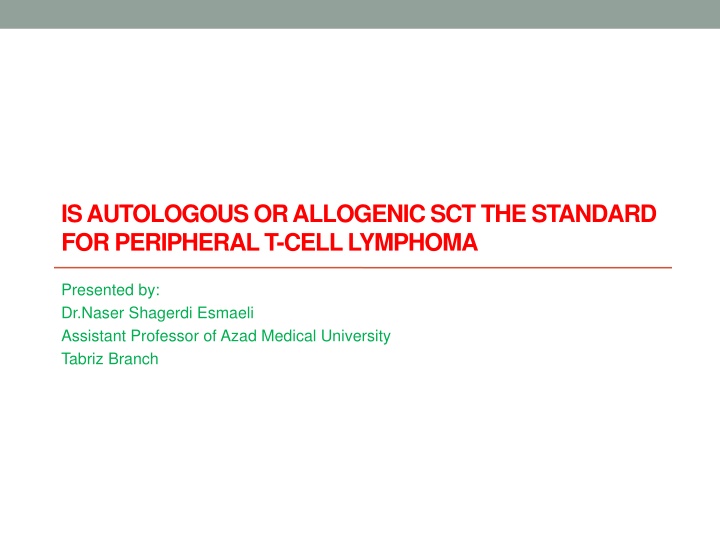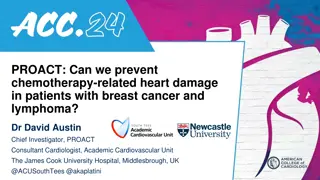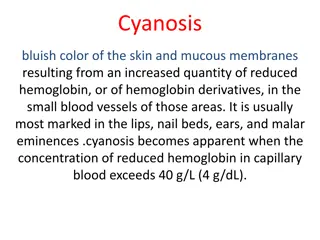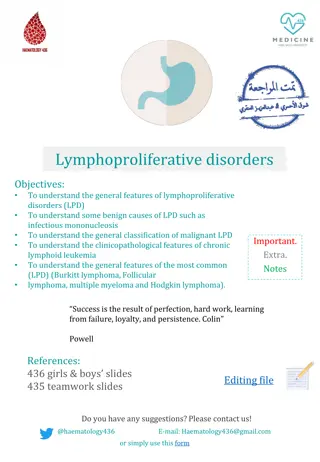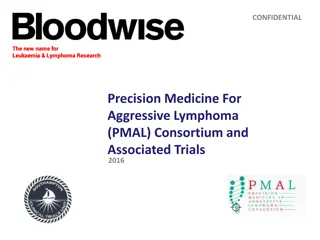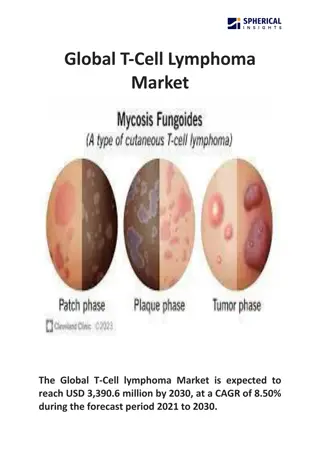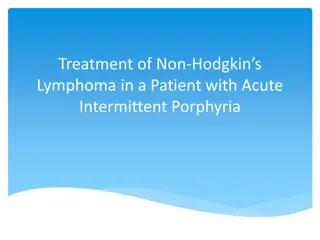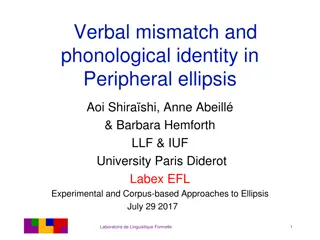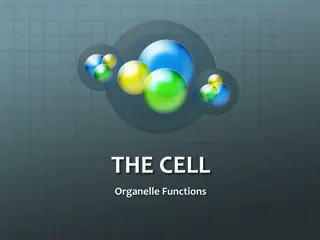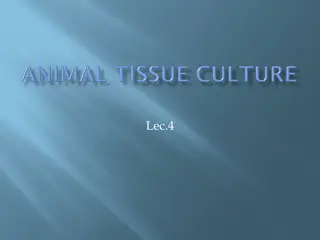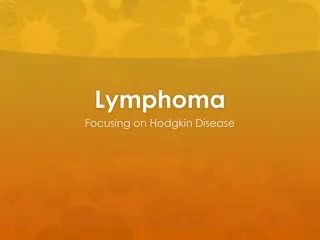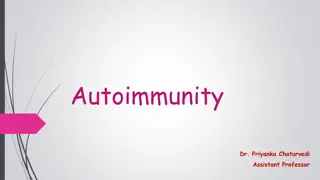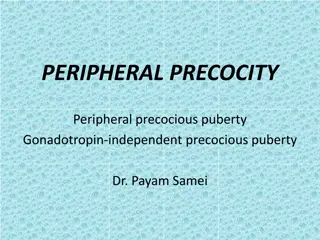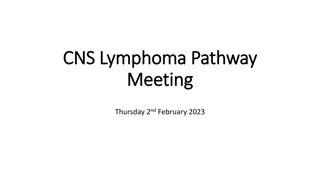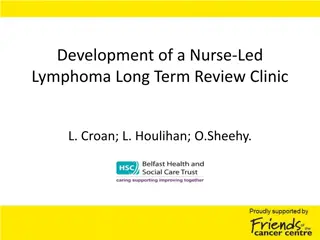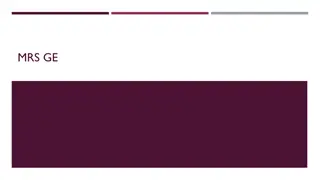IS AUTOLOGOUS OR ALLOGENIC SCT THE STANDARD FOR PERIPHERAL T-CELL LYMPHOMA
Peripheral T-cell lymphomas (PTCLs) are a diverse group of aggressive lymphomas with poor prognosis. Autologous hematopoietic stem cell transplantation (auto-HSCT) has been a standard treatment approach, but allo-HSCT is emerging as a promising alternative due to potential benefits. Understanding the importance of transplantation in PTCL management is crucial for improving patient outcomes.
Download Presentation

Please find below an Image/Link to download the presentation.
The content on the website is provided AS IS for your information and personal use only. It may not be sold, licensed, or shared on other websites without obtaining consent from the author.If you encounter any issues during the download, it is possible that the publisher has removed the file from their server.
You are allowed to download the files provided on this website for personal or commercial use, subject to the condition that they are used lawfully. All files are the property of their respective owners.
The content on the website is provided AS IS for your information and personal use only. It may not be sold, licensed, or shared on other websites without obtaining consent from the author.
E N D
Presentation Transcript
IS AUTOLOGOUS OR ALLOGENIC SCT THE STANDARD FOR PERIPHERAL T-CELL LYMPHOMA Presented by: Dr.Naser Shagerdi Esmaeli Assistant Professor of Azad Medical University Tabriz Branch
Peripheral T Cell Lymphomas (PTCLs) Incidence rate of peripheral T-cell lymphomas (PTCLs) is obviously higher in Southeast Asia than North America and Europe, and approximately 10 15% of non-Hodgkin s lymphomas (NHLs) belong to matured T-cell or natural killer (NK) cell lineage in China. PTCLs are highly heterogeneous and generally present with aggressive clinical features.
Anaplastic lymphoma kinase (ALK)-positive or negative anaplastic large cell lymphoma (ALCL), angioimmunoblastic T-cell lymphoma (AITL), PTCL not-otherwise-specified (PTCL-NOS), and extranodal NK/T-cell lymphoma (ENKL) occupied more than 90% of PTCLs.
Prognosis Except for ALK-positive ALCL, other PTCLs usually had a poor prognosis with 5-year overall survival (OS) rates of <40% because of resistance to conventional chemotherapy and autologous hematopoietic stem cell transplantation (auto-HSCT).
Standard approach to the treatment of PTCLS Auto-HSCT is a standard up-front consolidation for systemic PTCLs in the past. From 2001 to 2007, Nordic Lymphoma Group had completed a large prospective study to evaluate the efficacy of auto-HSCT as an up-front strategy in untreated systemic PTCLs who achieved sustained CR/PR after conventional chemotherapy.
Although many BMT centers still recommended auto-HSCT for PTCL patients with refractory/relapsed disease, clinical outcomes are very poor because majority of cases will die of lymphoma in the end. Compared to auto-HSCT, benefits of allo-HSCT include avoiding lymphoma cell contamination of the graft, potential GVL effects, and the possibility of donor lymphocyte infusion (DLI) in the event of recurrent disease.
Transplantation in high Risk Patients Besides as a useful choice for refractory/relapsed PTCLs patients, some centers already explored the allo-HSCT as a frontline treatment for more and more patients with high-risk PTCLs and the results were promising. Loirat et al. reported that 29 of 49 newly diagnosed PTCL patients proceeded up-front allo-HSCT.The 2-year PFS rate for transplanted patients was 65.5% . TRM at 1 year after allo-HSCT was only 8.2%.
Indication and Timing of Allogeneic Hematopoietic Stem Cell Transplantation NCCN Guideline Disease stage Remission or no? Disease status Chemo sensitivity
ConditionningRegimens for Allogeneic Hematopoietic Stem Cell Transplantation Conditioning regimen is a very important factor for disease progression and survival after allo-HSCT. Conditioning regimen has at least three main roles, including helping engraftment of donor cells, killing tumor cells, and controlling disease to allow time for GVL activity. Keeping balance between conditioning intensity and TRM is the key point for PTCL during allo-HSCT. Ideal regimen is associated with an excellent antilymphoma effect and low transplant-related mortality. Different conditioning regimens have been used in allo-HSCT for patients with PTCLs. Conditioning regimens were divided into routine myeloablative conditioning (MAC) and RIC regimens by established consensus criteria.
Treatment Principle for Relapse after Allogeneic Hematopoietic Stem Cell Transplantation There have no standard guidelines for the salvage therapy of post-allograft relapse. Salvage approaches to deal with relapse/progression for PTCL after allo-HSCT are limited including immunosuppression withdrawal, DLI, chemotherapy, radiation, immunotherapy (such as interleukin-2, interferon- , and programmed cell death protein-L1 antibody), second allo-HSCT, and some clinical trials.
Conclusion and Future For patients with relapsed/refractory or high-risk PTCLs, allo-HSCT has been documented to lead to long-term remissions. However, there still has no confirmed benefit of allo-HSCT over autologous decreased risk of relapse compared to auto-HSCT was partially offset by higher TRM after allo-HSCT. approach because the Further multicenter prospective studies are required to demonstrate the timing of allo-HSCT, the choice of conditioning regimen, the intensity of posttransplantation immunosuppression, treatment procedure for relapse. of complication, and
References 1. Thomas' hematopoietic cell transplantation 2. Peripheral T-cell Lymphomas: Updates in Allogeneic Hematopoietic Stem Cell Transplantation Wen-Rong Huang, Dai-Hong Liu 3. How I treat the peripheral T-cell lymphomas Alison J. Moskowitz,1 Matthew A. Lunning,2 and Steven M. Horwitz1
